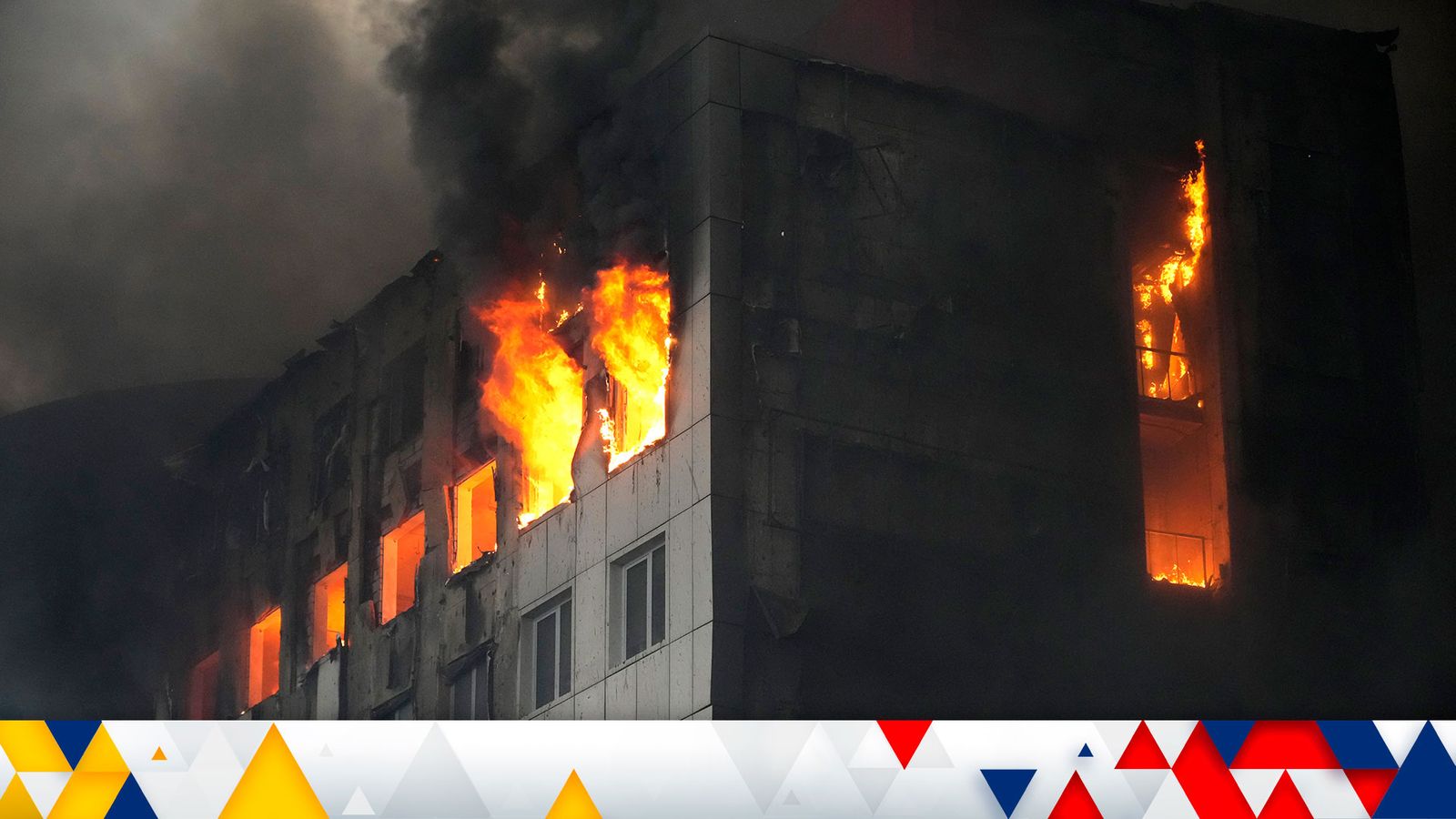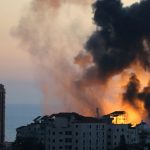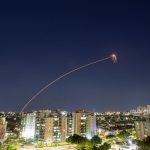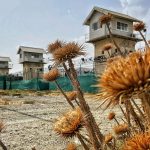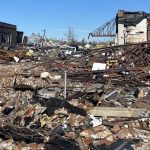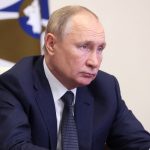“This has become a war of the cities,” says a military expert, as Russia shifts tactics in its bombardment of Ukraine to “siege” warfare.
Russia banked on Kyiv falling quickly – but it didn’t, says Professor Michael Clarke, former director general of the Royal United Services Institute (RUSI) and a security analyst. Instead the invasion has dragged on for days with key cities thought to be still under government control.
Russian forces have met an outgunned but determined resistance in the capital, but the change in focus on other major cities aims to “break the spirit” of the Ukrainians who have fought “ferociously” to defend their freedom and country, says Professor Clarke.
He explains the change in method – from Plan B to Plan A.
Ukraine-Russia news live: Dire warning from Mariupol as Russia changes strategy
He says: “The Russians began this with what I would call a Plan B which was to do it the way Western forces would have done it – with relatively light forces moving quite quickly from the border to surround key areas and move in quickly on Kyiv, get rid of the government, declare themselves a new government and that was all supposed to be done within 72 hours.
“It hasn’t worked, and they have made a big mess of it. The Ukrainians have fought back ferociously.
Ukraine invasion: Putin wants all of Ukraine and ‘worse is to come’ in conflict, warns Macron
International Criminal Court team head to Ukraine for war crimes investigation
Emergency legislation considered in bid to speed up sanctions against Russian oligarchs in wake of Vladimir Putin’s Ukraine invasion
“So now they have gone to Plan A, which is what they know how to do, which is to move in more slowly with heavier armour – siege trains, as they say, down the Dnieper valley, in order to surround the big cities.
“This has become a war of the cities. It is a north/south war at the moment, but it will revolve around the cities.
“The Ukrainians can’t defend the whole country, so they have defended the cities, and the Russians are now moving in on those cities.”
Two separate but synchronised operations in north and south
Moscow’s strategy has always been to take the southern coast and connect Crimea to Russia and to remove the regime in Kyiv, says General Sir Richard Barrons, a former British military chief, who has been analysing developments in the country.
He says: “In the south, an operation designed to link Russia to Crimea and to isolate Ukraine from the sea, and in the north, a separate operation focused on the capital Kyiv, and we believe the objective of that is regime change.”
Russian forces have come out of Crimea and have turned both east and west.
Those advancing towards the Donbas region in eastern Ukraine aim to link up in Mariupol with Russian forces coming from Russia.
“That establishes contiguous territory between Russia and Crimea, and isolates Ukraine from the Sea of Azov,” says Sir Richard.
In the west, forces have now arrived at Kherson – which supplies all the fresh water to Crimea – and which the Russians have reportedly taken control of.
“We assess that that operation will continue around the coast towards Odessa and we are likely to see unfold an attack on Odessa from the coast and also from the sea,” says Sir Richard.
“If that is successful, it will have separated Ukraine from the sea, and that is a crippling blow to the Ukrainian economy.”
Please use Chrome browser for a more accessible video player
Kherson
Russian troops have reached the centre amid conflicting claims over whether Moscow has captured its first major city.
It is being widely reported on Thursday that much of the city is in control of the Russian military.
Kherson’s mayor said invading forces are in control and that no Ukrainian troops are present, but the UK says the situation in the city of 280,000 remains “unclear”.
Mayor Igor Kolykhayev said Russian troops are in the streets and had entered the council building. “I didn’t make any promises to them… I just asked them not to shoot people,” he said in a statement.
Sir Richard says Russian forces are encountering civilians in Kherson and other cities where military operations have been launched.
He says: “The question that no one can answer right now is how does Russia control a series of urban areas by force in the face of active and passive widespread civilian and military resistance?”
Please use Chrome browser for a more accessible video player
Dnipro
The city of about three million people is a big industrial area, and its regional chief Mikola Lukashuk has said he has “a million people under arms”.
He has vowed to make the city a new “Stalingrad” for Russian forces – invoking what is considered one of the most heroic episodes in Russian history, the five-month defence of the city from the Nazis during World War II.
Please use Chrome browser for a more accessible video player
Kharkiv
Mayor Igor Terekhov has declared a similar stance in Kharkiv where there has been an intensive exchange of rocket artillery and heavy fighting.
“The city is united and we shall stand fast,” he told the BBC from his basement bunker.
Ukrainian officials have claimed “complete control” over the country’s second largest city amid ongoing fierce clashes with Russian forces.
Russian attacks, many with missiles, have heavily damaged police, university and government buildings, according to officials.
There have also been reports of dozens of fatalities and residential buildings being hit in the city of 1.5 million people.
“Kharkiv today is the Stalingrad of the 21st century,” said Oleksiy Arestovich, a top adviser to Ukrainian President Volodymyr Zelenskyy.
Prof Clarke says the Russians look as if they are now adopting their Plan A here, “to surround the city, probably coming at it from the east, airborne drops we think probably in the west”.
“They will sit outside the city, bombard the strategic centres as they see them – they won’t worry too much about civilian casualties – and then they probably would start to bombard civilian areas in order to break the spirit of the civilians, and then just move in.
“What happens in Kharkiv in the next two or three days almost certainly will be what will happen in Kyiv probably sometime next week.”
Please use Chrome browser for a more accessible video player
Mariupol
Mariupol is surrounded by Russian forces after coming under heavy shelling in recent days but is also still under Ukrainian control, officials say.
Mayor Vadym Boychenko said the barrage means “we cannot even take the wounded from the streets, from houses and apartments”, while water and electricity are reported to be out in the city.
In an update on Thursday, Mariupol city council said the Russians are “breaking food supplies, setting us up in a blockage, as in the old Leningrad”.
A statement added: “Deliberately, for seven days, they have been destroying the city’s critical life-support infrastructure. We have no light, water or heat again.”
The Black Sea port city lies on the edge of the disputed Donbas region in eastern Ukraine and “should have fallen within hours”, says Prof Clarke.
“We’ve been saying that for days now, and according to the Ukrainian government they are still holding on in Mariupol.
“I don’t know how they are doing it – they are coming under great pressure.
“At some point, the Russians almost certainly will link up all of this southern area, and then they will start to push north, up the Dnieper valley to unite the north and south of the country.”
Pro-Moscow rebels have threatened to launch targeted strikes there unless government forces surrender.
Please use Chrome browser for a more accessible video player
Kyiv
When the Russians launched the operation to take the capital, they very quickly encountered a staunch Ukrainian resistance.
“They believed they could achieve an occupation by consent – but now it has turned to force,” says Sir Richard.
“There has been a transition from that very light and optimistic entry to a much heavier, more forceful military operation,” he says.
Several loud explosions were reported in Kyiv in the early hours, though the target of the blasts remains unclear.
A major assault on the city of three million was believed to be imminent but appears to have been delayed due to the “quite extraordinary logistical failures” of a 40-mile-long military convoy of Russian vehicles heading towards Kyiv which has virtually ground to a halt.
Food and fuel shortages, as well as Ukrainian resistance, has plagued the huge line of military vehicles, according to Sir Richard.
“There has been a fracturing of their military command and control – the way they are trying to order this force appears weak,” he says.
“They have got an enormous traffic jam stuck in mud in some places and it will take some time to unstick it.
“But in that convoy is an awful lot of military power that can batter its way down at least one route in to the centre of the city.”
The Russian objective is to try and circle the city – three times the size of Manchester – with forces approaching from the north-east (Russia) and north-west (Belarus) as well.
“We don’t know how the Russians will choose to assault Kyiv and how strong that would be, or how effective the Ukrainian opposition to that assault will be… this will unfold over the coming week or so,” says Sir Richard.
“If that convoy gets itself unstuck and deploys itself around Kyiv – we would expect an assault in days.”
Follow the Daily podcast on Apple Podcasts, Google Podcasts, Spotify, Spreaker
Could Odessa be the next target?
If the Russians seize the Black Sea port of Odessa it would be a “major blow” to the Ukrainian economy, says Sir Richard.
The Ukrainian military has said Russian warships are heading in the direction of the city, while the country’s deputy defence minister Hanna Malyar said authorities are looking into information about possible Russian rocket or artillery fire on the airport.
“We assess that Odessa is the next target because it’s a very important city, and taking it would complete the isolation of Ukraine from the Black Sea and the Sea of Azov,” says Sir Richard.
“The Ukrainian economy depends on the ports, so the loss of Odessa would complete a major blow to Ukraine’s economic prospects.”
Does a strategic disaster lie ahead for Putin?
As Russian forces begin to occupy cities – big and small – their next plan of action remains unclear.
“There are two issues,” says Sir Richard. “One is, how will Russia control the cities it takes without the consent of the population that is still there? By considerable force, or some uneasy co-existence?
“The second issue is, if President Putin and Russia inflict a military victory on Ukraine – it seems to me very likely that this will be a strategic disaster for President Putin and Russia because of the way he has united the West against him on such stringent terms that would have been inconceivable a week ago.
“It looks like a tactical short-term success in Ukraine will turn into a strategic failure and the end of the Putin regime.”
